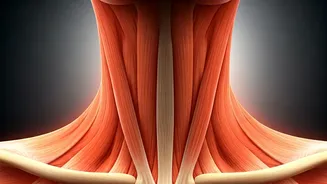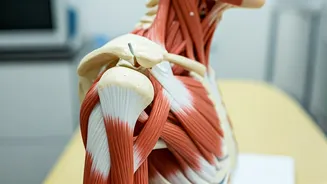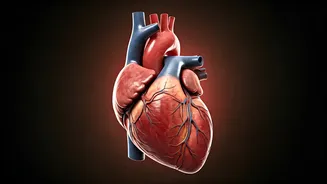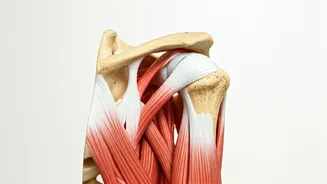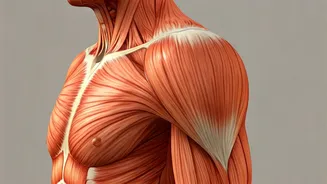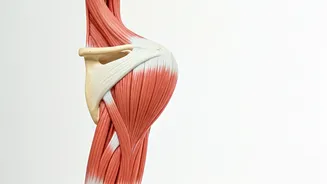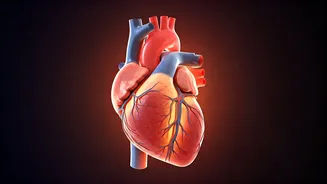Understanding Neck Spasms
A neck spasm, characterized by the involuntary contraction of neck muscles, can range in intensity from mild discomfort to severe pain, making even simple
movements challenging. These spasms arise from various triggers, including muscle strains, injuries, and underlying medical conditions. The pain can be localized or radiate to the shoulders, head, and even the arms, leading to stiffness, limited range of motion, and headaches. Often, neck spasms are temporary and resolve with rest and self-care. But the root cause can be complex. Recognizing the initial signs—tightness, tenderness, or a knot-like sensation—is important to effective management, which can involve a mix of rest, ice or heat application, and over-the-counter pain relievers. In severe cases, where pain is persistent or accompanied by other symptoms, seeking medical attention is crucial.
Common Causes Identified
Several factors can precipitate neck spasms. One of the most common causes is muscle strain or overuse, often resulting from poor posture, prolonged periods of sitting in front of a computer, or engaging in strenuous physical activities without adequate warm-up. Injuries, like whiplash from car accidents or sports-related trauma, can also lead to spasms. Underlying medical conditions, such as cervical spondylosis (age-related wear and tear of the spinal discs in the neck), arthritis, and, in rarer instances, more serious conditions like meningitis, can contribute to neck spasms. Stress and anxiety can also play a role, as they may lead to muscle tension. Identifying the specific cause is important for effective treatment. A doctor may diagnose the condition using a physical examination, medical history, and, if needed, imaging tests like X-rays or MRIs to look for underlying issues.
Recognizing Symptoms Promptly
The symptoms of a neck spasm can vary widely, but they generally involve some degree of discomfort or pain in the neck region. Common symptoms include a sudden onset of sharp or aching pain, stiffness that limits the ability to turn the head easily, and tenderness to the touch. The pain may be localized or can radiate to the shoulders, upper back, or even cause headaches. Some individuals may experience muscle tightness or knots in the neck. Other symptoms can include muscle weakness or a reduced range of motion. Depending on the cause and severity, other accompanying symptoms may include numbness or tingling in the arms or hands, especially if the spasm impacts nerve function. If the neck spasm is severe and linked to another medical issue, it could be accompanied by fever, severe headache, nausea, or vomiting, necessitating immediate medical evaluation.
When Immediate Help Needed
While many neck spasms resolve on their own with rest and care, certain symptoms indicate a more serious condition and warrant immediate medical attention. If you experience severe pain that does not improve within a few days, or if the pain intensifies, consulting a healthcare professional is crucial. Other red flags include the presence of fever, severe headache, stiff neck, nausea, vomiting, or any neurological symptoms like numbness, tingling, weakness, or changes in vision, as these could signify a more critical underlying issue like meningitis or a spinal injury. Also, any injury resulting from a high-impact event, such as a car accident or a fall from a significant height, needs immediate investigation to rule out serious structural damage. Ignoring these symptoms can lead to delayed treatment and potentially worsen the condition.
Treatment & Management Options
The approach to treating neck spasms depends on the underlying cause and the severity of the symptoms. For mild cases, rest, ice or heat application, and over-the-counter pain relievers, such as ibuprofen or acetaminophen, can provide relief. Gentle stretching exercises and massage may help to relax the muscles and improve the range of motion. In cases of more severe pain or persistent symptoms, a doctor may prescribe stronger medications, like muscle relaxants or prescription pain relievers. Physical therapy can be beneficial in teaching proper posture and exercises to strengthen the neck muscles. If the spasm is due to an underlying condition, the treatment will focus on that. For example, cervical spondylosis might require physical therapy, medication, or in rare cases, surgery. It’s also important to practice good posture, avoid prolonged sitting, and manage stress to prevent future spasms.
Preventative Measures Explained
Preventing neck spasms involves incorporating healthy habits into daily life. Practicing good posture while sitting, standing, and working is one of the most important preventive measures. This includes maintaining proper alignment of the head, neck, and back. Regular exercise can strengthen the neck muscles, making them less susceptible to spasms. This includes exercises such as chin tucks, neck rotations, and side bends. Additionally, incorporate regular breaks during long periods of sitting or working at a computer, to stretch and move the neck. Managing stress can also play a role because chronic stress can lead to muscle tension. Techniques like meditation, yoga, or deep breathing exercises can help to alleviate stress. Adjusting the workspace setup can also help: ensuring the computer screen is at eye level, using an ergonomic chair, and taking frequent breaks can prevent strain. Finally, ensure adequate sleep, as sleep deprivation can increase muscle tension and the likelihood of spasms.
